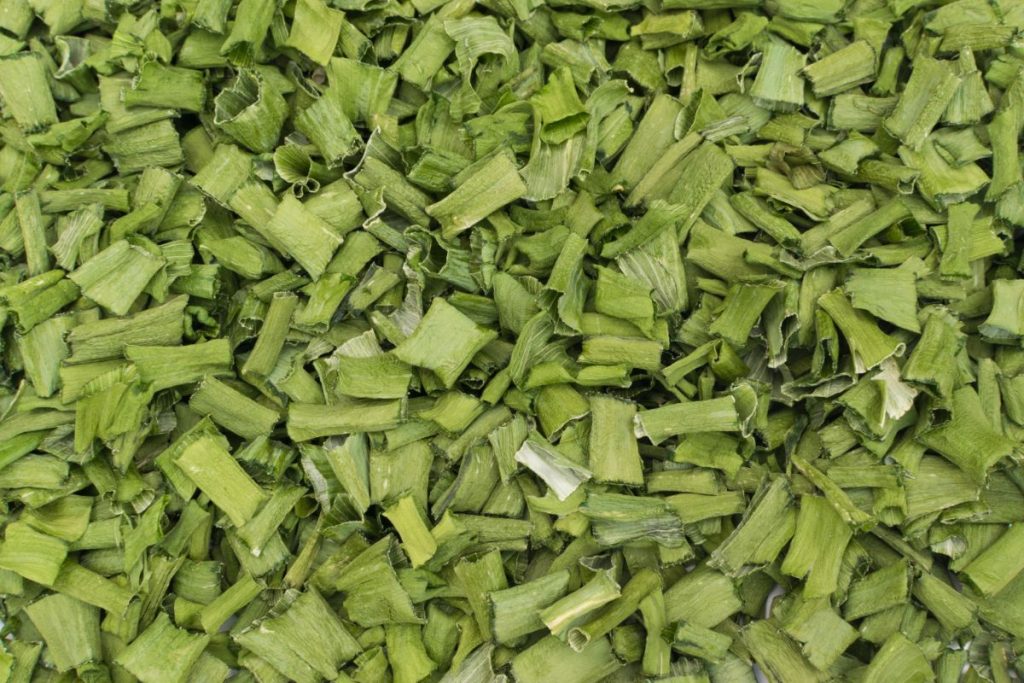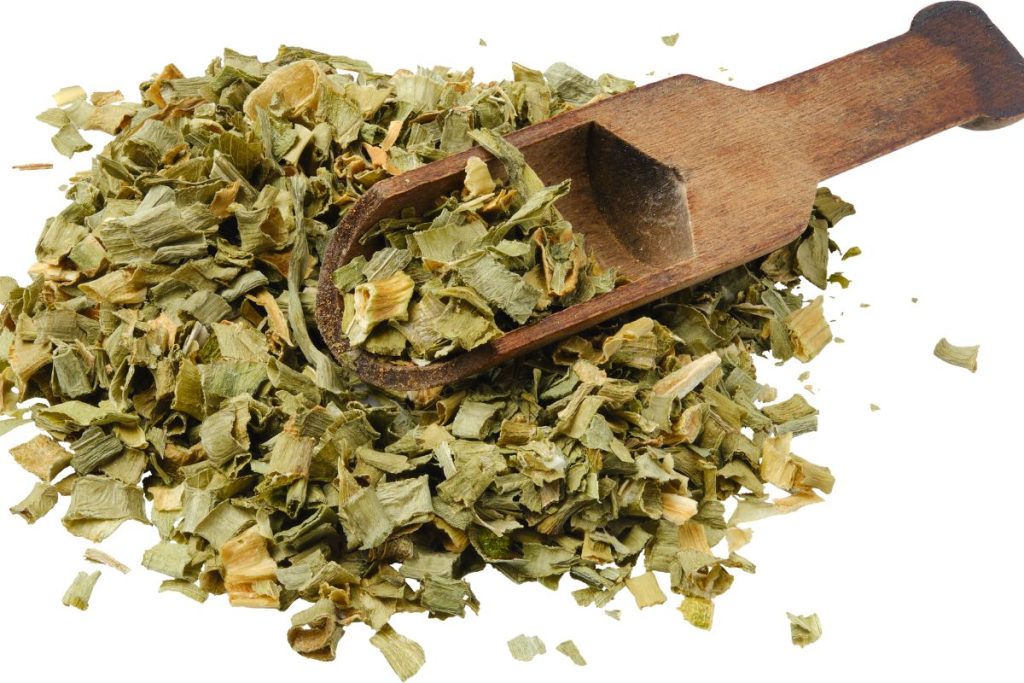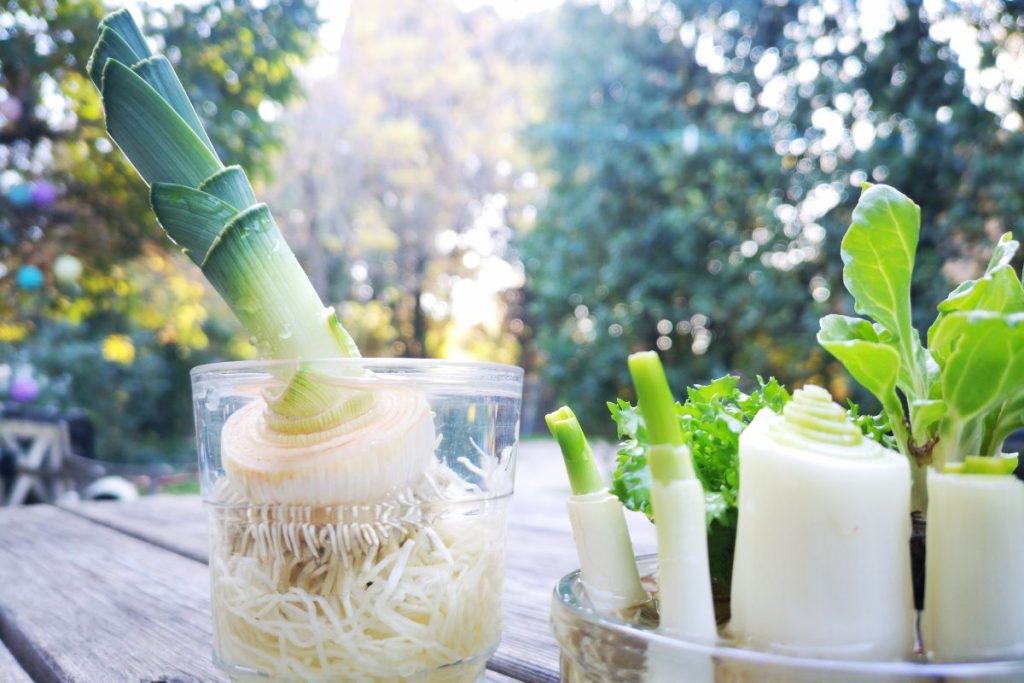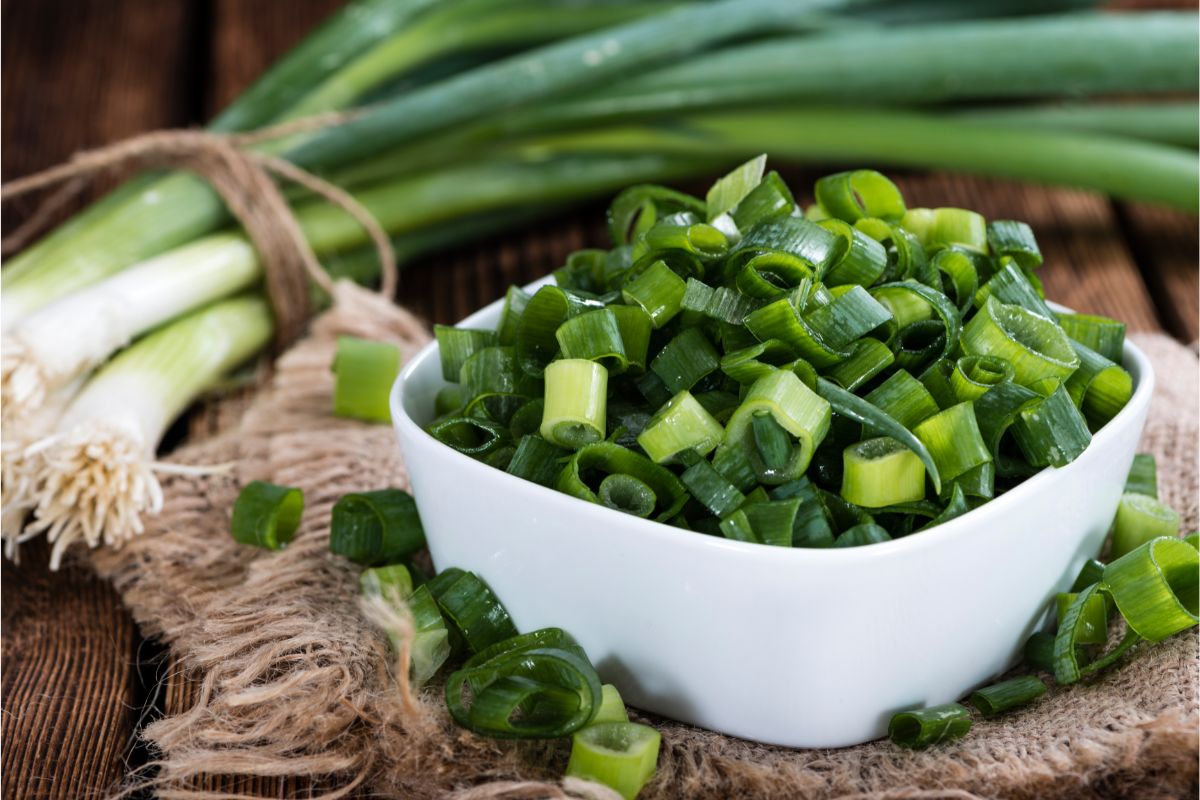Dry scallions are ideal for imparting an onion flavor to foods without giving them the overwhelming pungency of red onions. You can use them to flavor salads, dips, mashed potatoes, sauces, pasta, vegetables, dressings, and seafood. Dry your scallions using an oven or food dehydrator and store them in airtight glass jars.
Table of Contents
7 Ways to Use Dry Scallions
Dry scallions are a versatile ingredient in the kitchen. You can use them to add onion flavor to soups, stews, rice, pasta, dips, salads, seafood, and sauces.
Below are ideas and easy-to-make recipes to execute in your home kitchen for special treats incorporating dried scallions.
1. Colcannon Potatoes
If you are looking for exciting supper side dish ideas for St Patrick’s Day, look no further than colcannon potatoes!
Colcannon refers to Irish mashed potatoes with cabbage or kale. The dish features dried scallions, although fresh ones also work. Irish mashed potatoes work perfectly as a side dish for pot roast, Irish stew, and corned beef.
2. Green Greek Salad
This simple green Greek salad featuring a simple lemon dressing is crunchy and refreshing. While this recipe uses fresh scallions, you can use dried scallions instead, and it will still knock your socks off!
3. Egg Salad with Scallions
Dried green onions are great for making egg salad, and while this recipe uses fresh scallions, you can easily substitute the dried version. It features hard-boiled eggs, mayonnaise, mustard, and simple seasonings.
4. Egg Drop Soup
You can use dry scallions when making egg drop soup. This easy-to-make recipe is a great way to get kids involved in the kitchen, and this soup is always a hit!
5. Potatoes au Gratin
A popular French classic, potatoes au gratin is a versatile side dish that pairs well with baked ham, flank steak, prime rib, and even a crowd-pleasing Thanksgiving turkey!
The easy-to-make side features potatoes, dried onion flakes, flour, cream, cheese, butter, and select spices.
6. Guacamole with Charred Jalapenos and Scallions
If you are a fan of guacamole, use freeze-dried scallions and other ingredients to make this creamy guacamole to serve as a family-friendly spread or dip.
The guacamole is versatile and goes well with tortilla chips or as a garnish on tacos, quesadillas, and burritos.
7. Raw Yuca Casserole
Ready to enjoy authentic Puerto Rican flavors? This casserole features dry scallions and is a surefire winner for your next dinner party!
How to Dry Scallions at Home
You can dry your surplus scallions in the sun, in an oven, freeze-dryer, or in a food dehydrator.
How to Dry Scallions in a Dehydrator
Below are the steps to follow to dry green onions in a food dehydrator:
- Prep the scallions: Wash the green onions to remove any dirt. Remove any old or wilted leaves and cut off the roots with about two inches of the stem (keep these stumps for regrowing).
- Cut the scallions: Cut up the scallions on a cutting board using a sharp knife. Cut them into uniform pieces about 1/2 an inch long. The white part is thicker than the green, so you’ll have to cut smaller round pieces. Alternatively, cut them lengthwise to make it easier to separate the layers for faster drying. The white part contains more water. To make drying faster, keep them separate from the green ones and dry them on different dehydrator trays.
- Put the scallions in the dehydrator: Place the green and white scallions on separate drying trays. The green ones will dry sooner, and the white parts will stay longer to dry completely. Spread the green onion pieces on trays lined with parchment paper or mesh tray liners.
- Dehydrate the scallions: You can dehydrate scallions in two ways using different dehydrator temperatures. One method is to treat the scallions as vegetables and dehydrate them at 125°F. This method will take 5-6 hours. The second method is to treat the scallions as herbs and dry them at a lower temperature of 95-100°F for 7-9 hours. You might preserve the color and flavor of the onions better with this method.
- Cool and Test For Dryness: Allow the dry scallions to cool for 30-60 minutes, then check if they are dry and brittle. Ensure the white bottoms have no moisture left.
- Observe the Dried Scallions: Put the dry scallions in an airtight container for 5-7 days. Shake them about two times daily. Re-dehydrate if you notice things sticking on the side of the container and not falling off when you shake it.
- Store the dried scallions: Once you are sure they are completely dry and ready for long-term storage, place them in an airtight container, such as a glass or mason jar. Place the jar in a cool, dry, and dark location.

Drying Scallions in an Oven
Here’s how to dry scallions step by step using the oven method:
- Wash the scallions and cut off the ends.
- Preheat the oven to 140°F.
- Place your cut scallions on a cooling rack lined with parchment paper—keeping the greens and whites separate.
- Put the loaded cooling rack on a cooking sheet in the oven.
- Set your oven to its lowest temperature (125°F or 150°F).
- Leave the oven door partially open for optimum air circulation and ease of moisture removal.
- Dehydrate the scallions for 3-5 hours or longer, depending on your oven. Check them regularly to avoid burning.
- Take the scallions out of the oven and allow them to cool. Test for dryness.
- Monitor the dry scallions over 5-7 days, ensuring they are thoroughly dried.
- Store the dried green onions in an airtight container and place in a cool, dry place.
How to Freeze-Dry Scallions
Although it’s not a popular method, freeze-drying food is possible in a freeze-dryer.
- Prepare the onions for drying by washing and slicing them.
- Spread the cut scallions on freeze-dryer trays and place them in the dryer.
- Power on the freeze-dryer and let it run through its drying cycle for about 12-15 hours.
- Pack the dry scallions immediately in an airtight container. Delayed packaging causes the dehydrated scallions to reabsorb atmospheric moisture.
How to Dry Scallions in a Microwave
Drying foods in microwaves isn’t a standard practice, but the wide availability of microwaves has more people interested in using them for dehydrating.
- To dehydrate scallions in a microwave, clean and cut the scallions into pieces as desired, ensuring you remove the base of each stem.
- Place the whites and greens separately using a different microwave-safe plate for each. Set the microwave to “defrost” to prevent burning your scallions.
- Microwave the scallions for 30 minutes.
- Check the progress about every 10 minutes and use a wooden spoon to turn the onions after 30 minutes to check for complete drying.
- Remove the dry scallions to cool, and then store in airtight containers.
How Do You Dry Scallions Naturally?
To dry scallions naturally, place them in the sun for 8-11 hours of sunshine in low-humidity areas. High-humidity areas will necessitate keeping the semi-dried scallions overnight and continuing the process the following day when the sun rises.
- Clean the bunches of green onions in cool water. Pat them with a kitchen cloth or paper towels to remove the water.
- Cut off the root parts and slice the scallions into even smaller pieces for consistent and faster drying. Sun-drying takes time. Consider keeping the green parts from the whites and separating the rings of the whites.
- Spread the chopped green onions on metal sheets or drying racks and place them in direct sunlight. Keep them away from pets and direct wind, which might blow them away.
- Collect your scallions once dry for cooling, testing, and storage.

Is there a Difference between Green Onions, Scallions, and Chives?
Scallions and green onions are the same. In America, they are called scallions but most of the rest of the world refers to them as green onions. People often confuse them with spring onions, which have been left in the ground longer and are older, with larger bulbs.
Green onions or scallions belong to the Allium family. They have a long delicate white stem with delicate green leaves at the top and a root mass at the bottom.
Scallions are milder in pungency and flavor than red onions. They are mild and sweet. Both the green leaves and white parts are edible.
Most people confuse chives with green onions or scallions, but they are different. Chives also belong to the Allium family and are considered a herb rather than a vegetable as green onions.
Chives have a smaller and thinner profile than green onions. This makes them more delicate. Their green color is more pronounced, and their onion flavor is milder than green onions.
Benefits of Using Dried Scallions
Dried scallions have the same health benefits as onions and leafy vegetables.
Green onions are an excellent source of folate, vitamin C, and vitamin A and most of these nutrients are preserved in dried scallions.
Studies suggest that the antioxidants in onions (including scallions) may help fight against obesity, diabetes, and hypertension. The Mediterranean diet is considered heart-healthy since it contains lots of onions and closely related vegetables.
How Long Can You Store Dried Scallions?
When stored in an airtight container in a cool, dry, and dark place, scallions dried in an oven or dehydrator can stay usable for six months up to one year.
Freeze-dried scallions can stay usable for 10 to 15 years if you vacuum seal them using an oxygen absorber. The shelf-life will be shorter if you simply seal them in mylar bags, vacuum seal bags, or glass and mason jars.
Sun-dried scallions stay usable for about 12 months.
Regrowing Scallions
To regrow scallions from the stumps, place the stumps in a standing position in a small jar with the root ends facing down. Pour cool water into the jar until the roots are covered. Leave the white parts uncovered.
Place the jar on a windowsill with the roots still in the water. Let the setup rest but change the water at least once every week. The stumps will develop green shoots in a few days.
Allow the shots to grow to 4-5 inches long before planting the new plants in potting containers or directly in the ground. Cut off the leaves to their lowest point during planting to tame their growth and prevent weakening the plant.

Rehydrating Scallions
Rehydrating dry scallions is easy by using boiling water. Boil some water and pour it into a heat-safe bowl. Pour your dry scallions into the water and leave them to steep for 10-15 minutes. Cover the bowl to preserve the flavor while they rehydrate.
Rehydrating dried scallions in cold water is also possible, but it takes much longer.
The good news with either rehydration method is that you can use both the rehydrated scallion pieces and the rehydrating water. Strain the water through a sieve and use it to add flavor to soups and stews to help distribute a lovely onion flavor.

